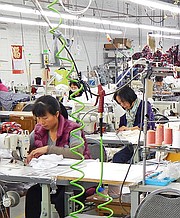Newsmakers 2015: Los Angeles Minimum-Wage Laws Prove Challenging to Apparel Industry
Manufacturing
As of Thursday, December 10, 2015
A patchwork of new minimum-wage laws were passed in Los Angeles this year, setting up cities to compete with each other for businesses that want to skirt paying the higher salaries.
The Los Angeles City Council started the movement in July when it passed an ordinance that would raise the minimum wage in the city to $15 an hour by 2020.
A month later, the Los Angeles County Board of Supervisors followed the City Council’s path and also passed a law that mandates that workers be paid at least $15 an hour by 2020 in unincorporated areas of the county. The Santa Monica City Council has been considering a similar ordinance since last fall but has not reached a final vote on the issue.
Major Los Angeles–adjacent industrial cities, such as Commerce and Vernon, where many garment contractors and manufacturers are located, have not followed the same minimum-wage path, leaving many to wonder how many businesses will start moving there to evade paying higher salaries.
To avoid a hodgepodge of different wage regulations that vary from city to city, many believe the state should pass one law that covers all cities and counties in California.
In June, the state Senate agreed to a plan that would boost the state’s minimum wage from the current $9 an hour to $13 an hour by 2017. It already goes up to $10 an hour on Jan. 1. But the state Assembly won’t be taking up the issue until next year. It has adjourned until Jan. 4.
Clothing factories in Los Angeles would be greatly affected by the rise in minimum wage because many of their workers have their base salary tied to thatwage. Some factory owners have said they would have to raise their sewing rates or move to a new location to stay in business.
